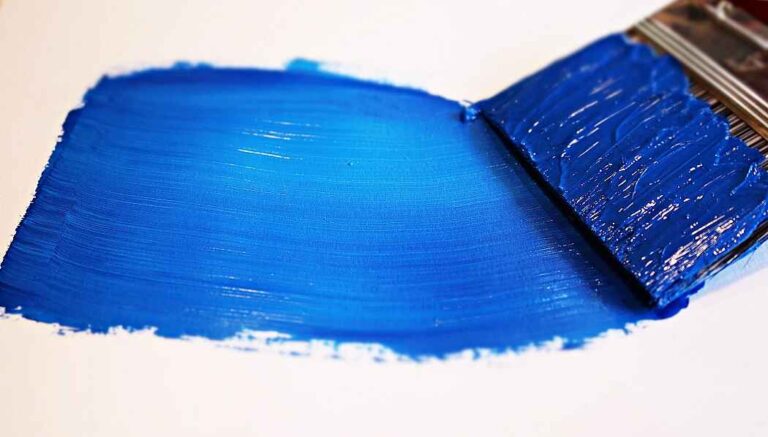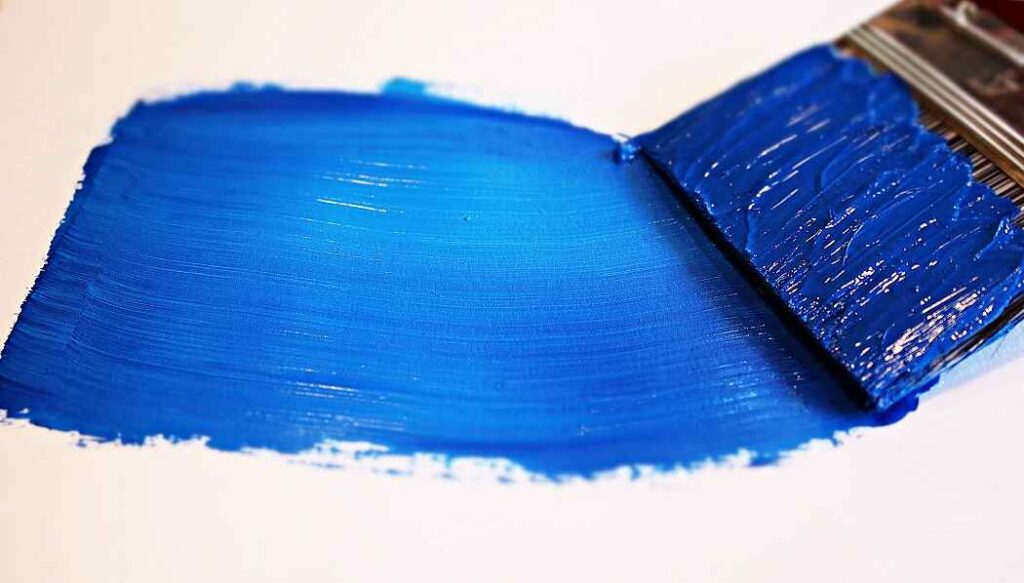
What Is Deep Base Paint Used for?
Among the diverse range of paint types available, one particular term that has been making waves in the industry is “Deep Base Paint.” But what exactly is Deep Base Paint used for, and why has it become a popular choice for many homeowners and professionals alike?

Read on to learn about Deep Base Paint and how it can elevate the aesthetics of your living spaces to new heights.
What is Deep Base Paint?
Deep base paint is a type of paint formulation designed to achieve darker and more saturated colors. It serves as the foundation for creating rich and intense hues by offering a higher concentration of pigments compared to regular base paints.
It is typically used when the desired color falls within the darker end of the spectrum. Its high pigment content provides better coverage and opacity, reducing the number of coats needed for proper color depth.
Due to the increased pigmentation, deep base paint may have a thicker consistency than other bases, necessitating occasional stirring during application. When selecting a paint color, it is crucial to choose the appropriate base type to achieve the desired end result effectively.
What Is Deep Base Paint Used for?
Deep base paint’s versatility and unique properties enable it to be used for a wide range of indoor and outdoor applications in both residential and commercial settings. Let’s find out the uses in detail:
1. Interior Applications:
Walls and Ceilings: Deep base paint is frequently used for painting interior walls and ceilings. Its high pigment concentration ensures that the color appears bold and intense, providing a striking look to any room.
Furniture and Cabinetry: Deep base paint is often chosen for refinishing furniture and cabinetry. It can add a touch of elegance and sophistication to these pieces, giving them a fresh and updated appearance.
Decorative Elements: For accent walls or specific decorative elements like moldings, trims, and feature designs, deep base paint can be an excellent choice. It helps create a focal point and adds visual interest to the interior space.
2. Exterior Applications:
Facades and Siding: Deep base paint is suitable for painting the exterior facades and siding of buildings. It offers enhanced UV resistance and durability, ensuring that the color remains vivid and vibrant over time despite exposure to the elements.
Trim and Accents: When contrasting elements are desired on the exterior of a building, deep base paint can be applied to trims, accents, or architectural details. It helps highlight and complement the overall color scheme, enhancing the curb appeal of the property.
3. Custom Color Mixing:
Deep base paint serves as a base for creating a wide range of custom colors. Painters and homeowners can add tinting agents to the deep base paint to achieve specific shades that are not readily available in pre-mixed paint options. This makes it a popular choice for those seeking unique and personalized color schemes.
4. Suitable for Dark Colors:
When you require deep, dark, or bold hues, deep base paint is the go-to option. Regular paint may struggle to provide even coverage for these colors due to lower pigment concentration, but deep base paint ensures a smoother and more uniform finish.
5. Artistic Projects:
Artists and craftspeople often use deep base paint for their projects due to its exceptional color intensity. Whether it’s canvas paintings, murals, or DIY crafts, deep base paint provides a brilliant palette for creative expression.
6. Highlighting Architectural Details:
Deep base paint is often used to highlight architectural details like moldings, cornices, and other intricate features. By applying deep base paint to these elements, they stand out more prominently, accentuating the architecture and adding a touch of elegance to the interior or exterior design.
7. Specialized Finishes:
Deep base paint can be used to create specialized finishes, such as faux finishes, textured effects, or metallic effects. The higher pigment content allows these finishes to appear more pronounced and captivating.
8. Commercial and Residential Projects:
Deep base paint finds its applications in both commercial and residential projects. From office spaces and retail stores to homes and apartments, the versatility of deep base paint makes it a valuable choice for various settings.
Advantages and Disadvantages of Deep Base Paint
Advantages of Deep Base Paint:
Deep base paint’s advantages make it an attractive option for projects where rich, vibrant colors are desired, and where superior coverage and flexibility in color selection are essential. Take a look at the key advantages-
1. Enhanced color depth and richness:
Intense colors: Deep base paint contains a higher concentration of pigments, resulting in more vibrant and intense colors compared to standard paints.
Luxurious appearance: The rich and deep hues lend an elegant and luxurious look to any space, enhancing the overall aesthetic appeal.
2. Improved coverage and hiding capabilities:
Concealing imperfections: The high pigment content in deep base paint allows it to cover flaws and imperfections on the surface effectively, offering better hiding capabilities.
Fewer coats required: Due to the increased opacity of the paint, it often requires fewer coats to achieve full coverage, saving time and effort during the painting process.
3. Flexibility for customization:
Tinting options: Deep base paint serves as an excellent base for custom color mixing. By adding tints, it becomes easier to create a wide array of shades and hues, giving homeowners and decorators greater flexibility in their color choices.
Color matching: Deep base paints are more conducive to matching specific colors, enabling seamless integration with existing color schemes in a home or commercial space.
4. Suitable for various surfaces:
Interior and exterior use: Deep base paint is suitable for both interior and exterior applications, offering consistent and beautiful color results for different areas of a building.
Different materials: It adheres well to various surfaces, including drywall, wood, masonry, and metal, providing a smooth and durable finish on different substrates.
Potential limitations or challenges:
While deep base paint offers numerous advantages, it also comes with a few limitations and challenges. Below are some potential drawbacks associated with deep base paint.
Mixing complexities: Precise and consistent color mixing is crucial with deep base paint to achieve the desired shade, and any miscalculation or inconsistency can lead to color variations between batches.
Susceptibility to fading: Intense colorants in deep base paint are more susceptible to fading when exposed to sunlight or harsh weather conditions, leading to a loss of vibrancy over time.
Consistency issues: Achieving consistent color coverage can be problematic, especially when multiple batches of deep base paint are used. Slight variations in pigment or base composition can lead to color variations on the painted surface.
Higher cost: Deep base paints are often more expensive than standard paints due to their higher pigment concentration.
How to Use Deep Base Paint?
Below is a step-by-step guide on how to use deep base paint effectively:
Materials Needed:
- Deep base paint of your desired color.
- Paint rollers and brushes (high-quality synthetic brushes work well).
- Drop cloths or plastic sheets to protect surfaces from spills and splatters.
- Painter’s tape to protect trim, edges, and fixtures.
- Stir sticks for mixing the paint.
- Paint tray or bucket.
Step-by-Step Guide:
Prepare the Room: Clear the room of furniture and any items that may obstruct your painting process. Cover the floor with drop cloths or plastic sheets to protect it from paint spills.
Clean and Prime: Ensure that the walls are clean and free from dirt, dust, and grease. If the walls are new or have not been painted before, apply a primer suitable for the surface. Primer helps the paint adhere better and promotes even coverage.
Tape Off Edges: Use painter’s tape to protect baseboards, trims, edges, and fixtures that you don’t want to paint. Apply the tape carefully, ensuring it’s straight and fully adhered to the surface to prevent paint bleed.
Stir the Paint: Open the deep base paint can and thoroughly stir the paint using a stir stick. The pigments in deep base paints can settle over time, so stirring ensures an even distribution of color.
Cut in the Edges: Use a high-quality paintbrush to “cut in” along the edges of the walls, where the roller cannot reach easily. Apply a straight line of paint along the corners, edges, and near the ceiling. This will create a clean border for the roller to follow.
Roll the Paint: Pour the deep base paint into a paint tray or bucket. Load the paint roller with paint, but avoid overloading it to prevent drips. Start rolling the paint onto the wall in a “W” or “M” pattern for even distribution. Work in small sections, about 3×3 feet, to maintain a wet edge and avoid visible seams.
Maintain a Wet Edge: Deep base paint can dry quickly, so it’s essential to maintain a wet edge while working. This means overlapping the new strokes with the previous ones before they dry. This technique helps to prevent visible lines and streaks.
Apply Additional Coats: Depending on the paint’s quality and the wall’s condition, you might need to apply multiple coats of deep base paint to achieve the desired color depth and coverage. Allow each coat to dry completely before applying the next one.
Inspect for Evenness: Once the final coat is applied and dried, inspect the painted surface for evenness and uniformity. Check for any missed spots or uneven patches.
Remove Painter’s Tape: After the paint has fully dried, carefully remove the painter’s tape at a 45-degree angle. This prevents any accidental paint removal or damage to the freshly painted surface.
Clean Up: Clean your brushes, rollers, and paint tray thoroughly with soap and water, or according to the paint manufacturer’s recommendations.
By following these steps, you’ll be able to effectively use deep base paint to create a stunning and vibrant finish for your walls or accent features. Remember to choose high-quality paint and tools, as they will significantly impact the final result.
Can Deep Base Paint Be Used as White Paint?
No, Deep Base paint is not suitable as a white paint substitute.
Deep Base paint is formulated with a high concentration of colorants, intended to be tinted with specific colors. It lacks the necessary pigment to achieve a pure white hue.
For white paint, one should use a paint specifically labeled as “White Base” or “White Paint” that already contains the proper white pigment. Mixing Deep Base paint with white may result in a lightened color but won’t produce a true white shade.
Can I Use Deep Base Paint Without Tinting?
Yes, you can use deep base paint without tinting. The deep base paint already contains a high level of pigments, giving it a strong color without the need for additional tinting.
So, if you prefer the original deep base color, you can use it as is without any tinting. But, if you want a specific shade, tinting may be necessary. Tinting allows you to achieve a wide range of custom colors by adjusting the amount and type of colorants mixed into the base paint.
Always follow the manufacturer’s guidelines for the proper use and tinting instructions for the best results.
Final Words
Deep base paint serves as a fundamental and versatile component in the world of painting. Throughout our discussion, we have uncovered the various applications and advantages of this type of paint.
So, embrace the richness of colors and the ease of application, and let your imagination run wild with this exceptional paint choice. Remember, with deep base paint in your toolkit, the possibilities are truly limitless.
